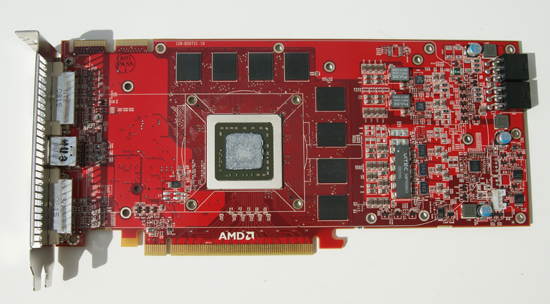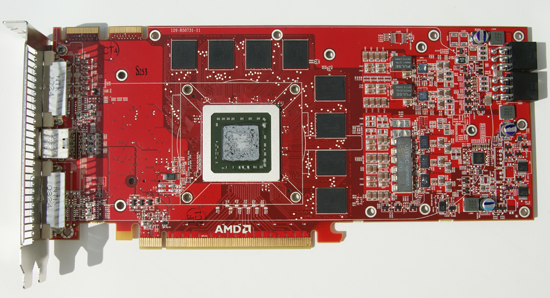The Radeon HD 4870 1GB: The Card to Get
by Derek Wilson on September 25, 2008 12:00 AM EST- Posted in
- GPUs
With the launch of the Radeon HD 4870, AMD showed us that they are not only still in the game, but they are back. Their hardware either out performed or was on par with NVIDIA hardware priced significantly higher. As a result, NVIDIA was forced to significantly adjust their prices downward to remain competitive. And, currently, they are competitive in terms of pricing and performance.
But in this business competitive isn't always good enough. AMD came out of the gate swinging for a knock out. And they did a good job of winning a significant amount of mindshare. They built a good product and priced it very aggressively at launch. While our concern is the current state of things, and our recommendation will be for the part that gives our reader the best value, that's not how every graphics card enthusiast sees it. The things companies do (like initially selling their hardware at way too high a price) can significantly affect the position of some enthusiasts.
That might be one reason NVIDIA went down the core 216 path with the GTX 260. A name more like GTX 265 would have been nice, and we already talked about how much we don't need dozens of parts all with slight tweaks and price differences cluttering up the market. But, the core 216 did help make NVIDIA's hardware more competitive (even if it didn't put it over the top). And more competitive is a good thing. Better competition does nothing but benefit the consumer, and we love to see it. If NVIDIA took that step because they want to win back some mindshare then that's fine with us. All we care about is what performs best in a price class, because that is what benefits our readers.
Of course, the core 216 might also have been anticipating the eventual availability of the Radeon 4870 1GB. In which case, the core 216 falls short.
Well, it isn't just that the GTX 260 falls a little short. The fact is that the extra RAM really does make a significant difference in many high quality high resolution situations when playing current games. We didn't expect the gains we see here, and combined with the original stellar performance of the Radeon HD 4870, we have to say that we are impressed.
The Radeon HD 4870 1GB has the same number of GDDR5 chips on board, but the devices on the 1GB model are double the density of the 512MB part.


Yes, these are different parts. The top one is the 512MB version and the bottom one is the 1GB.
The 512MB card we have uses Qimonda GDDR5, while the 1GB model we tested has Hynix devices. As GDDR5 is still pretty new, it is likely that the delay in getting out the 1GB model of the 4870 had to do with delays in getting a high enough supply of high density RAM.
Anyway, we mentioned that the GTX 260 core 216 doesn't quite keep up now that the 4870 has twice as much RAM. Let's take a look ath exactly how short it falls, first in terms of how much performance we gain over the original model and then in absolute terms.
















78 Comments
View All Comments
JarredWalton - Thursday, September 25, 2008 - link
I would hope that someday soon AMD will address this with drivers or something... but seriously they dropped the ball here. I mean, 4850 and 4870 are the same GPU, so the only difference is clock speed and voltages. You can't expect me to believe that in this day and age they can't get clock and voltage adjustments to work on-the-fly. A BIOS flash can work it seems, but that just begs the question: why wasn't the BIOS programmed "properly" in the first place? (Possibly they discovered in testing that there were problems with the different voltages?) Users should *NOT* have to flash a GPU BIOS for stuff like proper power saving.Finally - Thursday, September 25, 2008 - link
Hmm. You are the test-guy. You should know (and tell us, please! :p)@HD4870vs.HD4850: You forgot 1 thing: the HD4870 has GDDR5, but the HD4850 has GDDR3. As it has been proven, this makes a big difference. So you can't say that they are the same. GDDR5 seems to be much more undervolting and power-saving-friendly.
Spoelie - Thursday, September 25, 2008 - link
Could you check with ATi if powerplay (down throttling clockspeed *and* voltage) is in the pipeline for a future driver release?I've been hearing forum voices saying "it's in the next release" for quite some time now.
Jedi2155 - Thursday, September 25, 2008 - link
In higher resolutions, I think this is a reality.I think the article is very truthful and quite a few other sites and come to back this up.
There is a problem with the frame buffer at higher resolutions and settings, especially if you understand how anti-aliasing among other things work.
Use Rivatuner to check the memory usage on the frame buffer yourself at those resolutions....
NullSubroutine - Thursday, September 25, 2008 - link
I don't have a problem with them using 8.7 for the 4870, far as I have last heard its a great driver for that card. But that is a horrible driver to use for the 4870 X2. While it wasn't the card being looked at, it can skew the results if you are trying to decide which card to get.Tiamat - Thursday, September 25, 2008 - link
Page 2:512MB -> 1024MB is a 100% improvement (i.e. double the ram) not 50% improvement. 50% improvement would have been to 768MB ram.
DerekWilson - Thursday, September 25, 2008 - link
heh ... you are quite right. sorry about that. i'll fix this.Spoelie - Thursday, September 25, 2008 - link
Power consumption: "Significantly" more in *both* idle and load?idle yes, load no
DerekWilson - Thursday, September 25, 2008 - link
by significant i mean the differences is not negligibleDiosjenin - Thursday, September 25, 2008 - link
I was rather under the impression that the 1GB per/2GB total RAM on the 4870 X2 was generally the reason it could be found in many cases to scale better than two 4870s, since the latter option included only 512MB per/1GB total RAM.Now that we have 4870s with 1GB RAM, can you stick two of them together and do a 2x 4870 1GB vs 4870 X2 comparison to see how that can affect the scaling disparities we've seen there before?